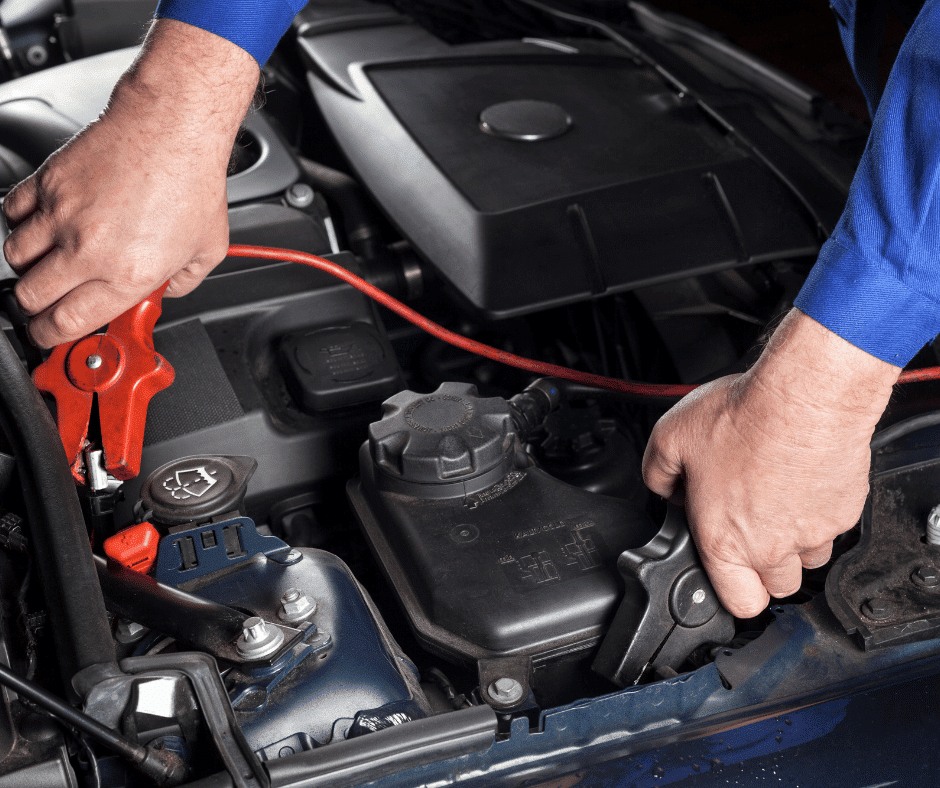Have you ever turned your key and found that your car won’t start? In this blog post, we’ll dive into the common reasons why your vehicle might need a jump start and how Jay Towing can assist you quickly and efficiently. We’ll explore everything from battery health to preventive maintenance, ensuring you have the knowledge to keep your car running smoothly and avoid being stranded.
Common Signs Your Car Needs a Jump Start
Recognizing the signs that your car may need a jump start can save you time and prevent you from being stranded. Here are the key indicators:
- Engine Doesn’t Start: If turning your key results in a clicking sound without the engine starting, it likely means the battery is too weak to turn the engine over.
- Dim Headlights: When your car’s headlights are unusually dim while starting, it indicates insufficient battery power.
- Slow Crank: If the engine turns over more slowly than usual, it’s a sign that the battery may not be providing enough power.
- Dashboard Warning Lights: Battery warning lights or check engine lights can indicate issues related to battery health.
- Backfiring: An unexpected backfire could be caused by intermittent sparks due to a weak battery.
Understanding these signs will help you act swiftly to resolve the issue, whether by charging the battery or calling for assistance.
Top Reasons for Battery Drain
Knowing why car batteries drain can help you prevent issues and extend the life of your battery. Here are the most common causes:
- Lights Left On: Leaving headlights or interior lights on when the car is off is a common reason for battery drain.
- Battery Age: As batteries age, their ability to hold a charge diminishes, leading to frequent power losses.
- Parasitic Drain: This occurs when certain electronic devices continue to draw power from the battery even after the engine is turned off.
- Poor Maintenance: Failing to maintain battery connections clean and tight can lead to inefficient charging and battery drain.
- Extreme Temperatures: Both hot and cold weather can severely impact a battery’s performance, causing it to drain more quickly.
By monitoring these factors and taking preventive actions, you can help ensure your battery maintains its charge and is ready when needed.
The Role of Weather in Battery Performance
Weather plays a significant role in battery performance; cold temperatures can reduce a battery’s ability to generate enough power to start the engine. In contrast, hot weather can increase the rate of battery fluid evaporation, weakening the battery’s internal structure. Both extremes demand more from your car’s battery, often leading to a higher incidence of failures and the subsequent need for a jump start.
How Inactivity Affects Your Car’s Battery
Inactivity can severely affect your car’s battery health, as batteries naturally discharge over time, even when not in use. For vehicles that are not driven regularly, it’s essential to periodically start the engine and let it run for a few minutes to recharge the battery. This practice helps maintain the battery’s charge level and ensures the vehicle remains ready to use when needed.
The Impact of Electrical Demands on Battery Health
Modern vehicles come with numerous electronic features and gadgets that all draw power from the battery. High electrical demands, especially when the engine is off, can drain a battery faster than expected. Managing the use of these devices, especially during periods when the engine isn’t running to recharge the battery, is crucial in maintaining battery health and avoiding unexpected battery failures.
Preventive Measures to Avoid Needing a Jump Start
To minimize the risk of needing a jump start, it’s essential to regularly check and maintain your car’s battery. This includes ensuring that the battery is fully charged, keeping the terminals clean, and having the battery tested by professionals periodically. Implementing these preventive measures can significantly extend your battery’s life and reduce the likelihood of being stranded with a dead battery.
How to Safely Jump Start Your Car
Safely jump-starting your car involves a few critical steps: First, ensure that both cars are off before connecting the jumper cables. Attach the red clamp to the positive terminal of your battery and the other red to the positive terminal of the donor battery. Connect one black clamp to the donor battery’s negative terminal and the other to an unpainted metal surface on your car’s engine block. Start the donor vehicle, followed by your vehicle, and let both run for a few minutes to allow the battery to charge.
Contact Us for Jump Start Services
Is your car struggling to start? Before you find yourself stuck, get familiar with the common causes and signs of battery failure. At Jay Towing, we’re always ready to help with fast and reliable jump start services. Reach out to us whenever you need assistance, and let us get you back on the road quickly and safely.
